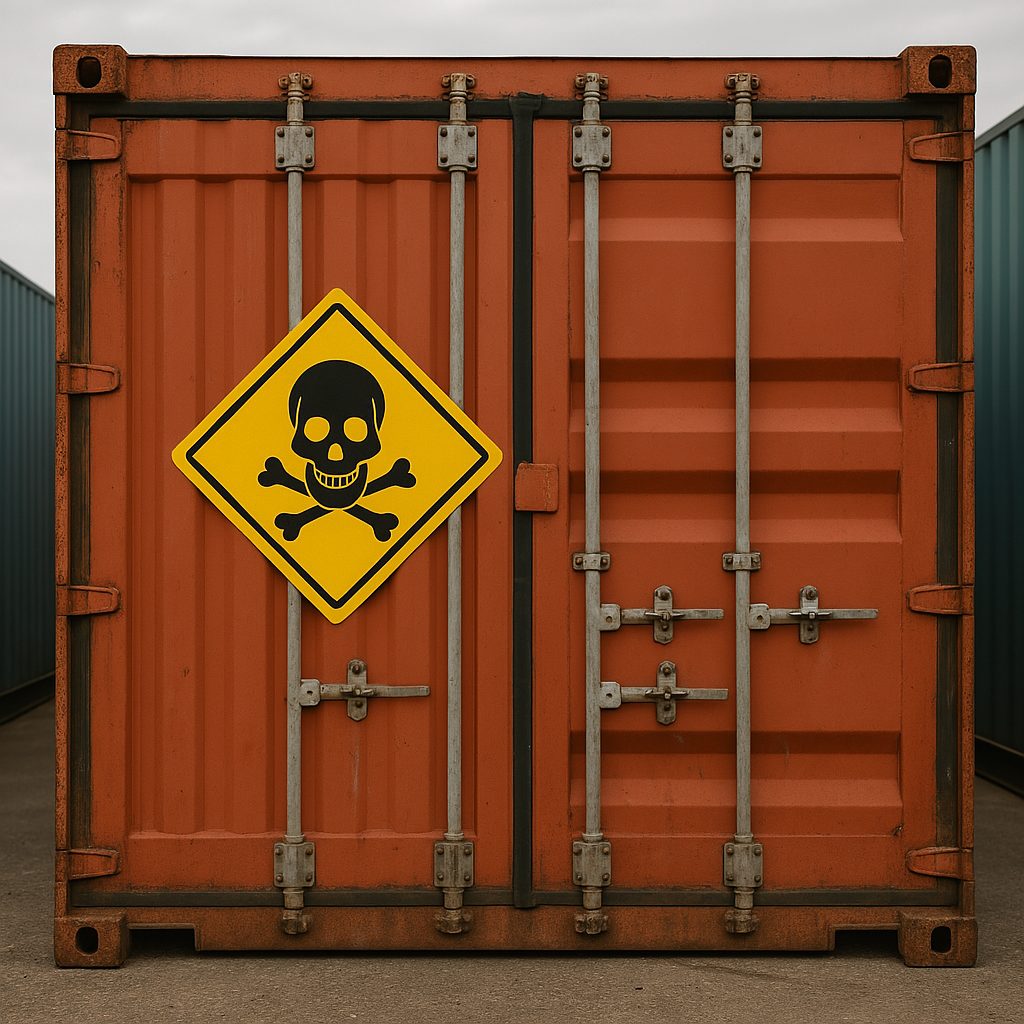Are You Compliant? A Guide to Packaging Dangerous Goods for International Transport
This is a guest post by Ellie Gabel.
People planning to ship dangerous goods internationally must understand the packaging-related requirements they must meet. The shipper bears the responsibility for many of these, and customers cannot expect logistics companies to verify that everything is in order before a container of dangerous goods begins its journey.
Understand What Constitutes Dangerous Goods
The United States Department of Transportation classifies hazardous goods depending on the items’ physical and chemical characteristics. People shipping potentially dangerous items after receiving them from manufacturers should consider requesting safety data sheets from those producers. The documents have a section about transportation information, which will show the associated risks of the products.

Some of the items grouped as hazardous are not ones people would necessarily think of as such unless they ship them often, such as paint and swimming pool supplies. However, the main thing to remember is that there are nine hazard classes, each with related risks. Shippers must identify the appropriate one before determining how to pack the goods safely.
Know the Particulars of Recent Changes
Some international shipping requirements change periodically, so people should always verify that they follow the most recent information when packaging their hazardous goods. Companies commonly ship lithium batteries when sending everything from scooters to laptops. However, these popular power sources are potentially dangerous and were the subject of changes enacted at the start of 2025.
These updates relate to how people should label the packaging before shipment and how they should document the contents. The chosen shipping method also dictates how shippers respond to the new requirements. Parties sending the products by air must abide by the rules immediately. However, there is a six-month transitional period for goods transported by rail, road, or sea. It gives applicable parties time to adjust their processes or products to ensure compliance. Those particulars demonstrate the importance of getting current information before sending hazardous products, regardless of the item type or transport method.
Relatedly, the responsible parties should also remain aware of changes specific to the countries or ports that the dangerous goods will pass through during transit. Otherwise, complications may arise that could result in fines or delayed arrivals. For example, China’s Ministry of Transport released new regulations for ship-carried dangerous goods that came into effect in March 2025. Products departing or entering ports in the country must have additional associated documentation, including the specific name of the perilous items.
Add the Correct Identification Markings
Drums, jerricans, and composite packaging are some of the things people use to ship dangerous goods internationally. All these options have associated United Nations symbols and packaging codes, which indicate the container’s characteristics and that it has passed the required packaging tests and received certifications. Someone handling the packaging can check this information to verify the type of container and what is inside it.
The packaging identification codes after the UN symbols have specific structures that help people determine the necessary information quickly. People should become familiar with the three common types before shipping dangerous goods. The first is a number followed by a letter, identifying the construction material and kind of packaging. The second code style is a number, then a letter and another number, showing additional details about the package, such as if it has a removable lid.
Finally, the last type always starts with the number six, followed by two letters and another number. These details tell people about the receptacle and outer materials used to ship dangerous goods.
Regardless of the identification code, there will always be a corresponding packaging group level equivalent, with the letters X, Y, or Z indicating danger degrees for the contents. X is the highest, while the other letters indicate medium and low dangers.
Include the Necessary Documents With the Package
Hazardous products sent internationally need a corresponding dangerous goods transport document. It requires the shipper to certify that they have packed, labeled, and declared according to the appropriate regulations.
In addition to including specifics such as the product’s net and gross weights and whether the contents are radioactive, shippers must give addresses and contact details for themselves and the recipients. Some products also require information about whom to call if emergencies happen during transit. Such parties must know about the shipments and their hazards and have 24/7 availability. Once shippers complete the documents, they should fold them and place the paperwork in plastic, transparent pouches attached with adhesive to the packages.
Choose Reputable Shipping Partners
After people have packaged their dangerous goods for international transport, they should select dependable companies to get the products to their destinations. Taking the time to verify that the business understands the particulars of shipping hazardous items and follows the necessary procedures will help parties make confident choices.
One unannounced commercial vehicle inspection of dangerous goods carriers conducted over five days in June 2024 revealed violations for 14% of trucks traveling in the United States and Canada. That investigation shows that although most companies operate legally, not all follow the necessary procedures.
Get Compliant Today
This overview may have revealed gaps in an organization’s current processes for packaging dangerous goods before shipping them abroad. Fortunately, awareness is the first step to making the necessary changes, so proactive behavior can make shippers compliant and avoid penalties.
This was a guest post by Ellie Gabel.
Author Bio
Ellie is a freelance writer who loves exploring the latest advancements in tech and science and how they’re impacting the world we live and work in. She’s also the associate editor of Revolutionized.com.




